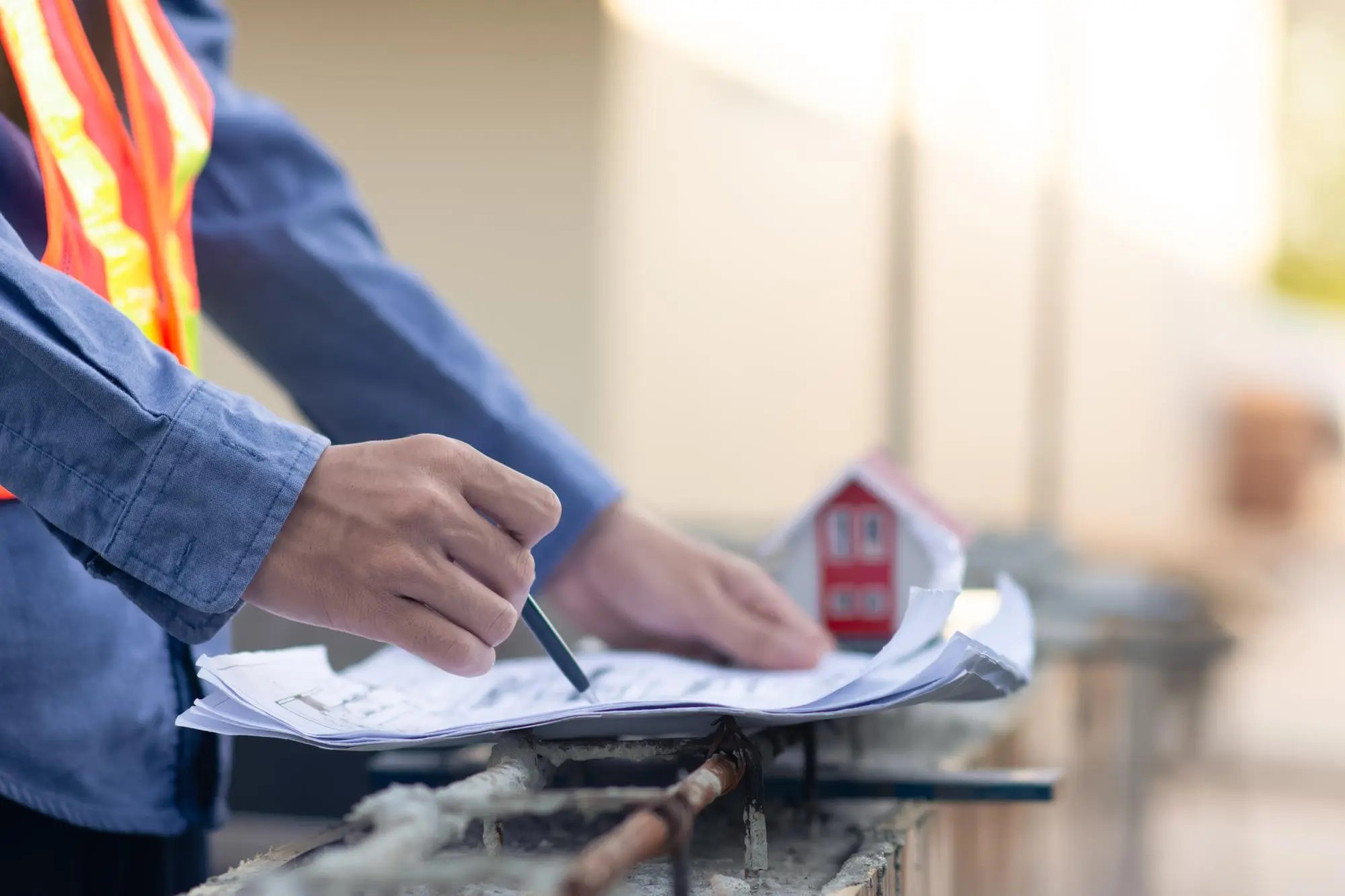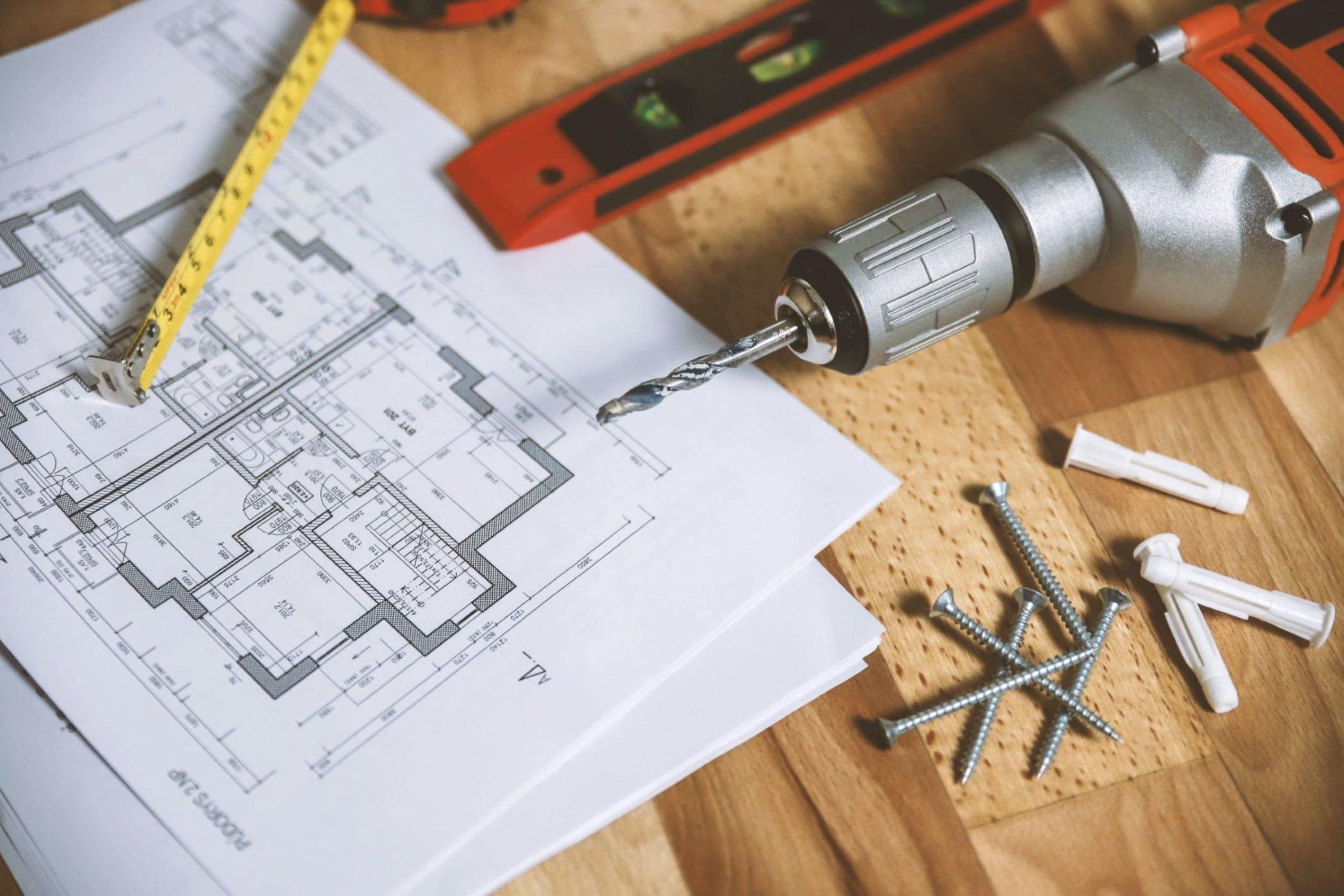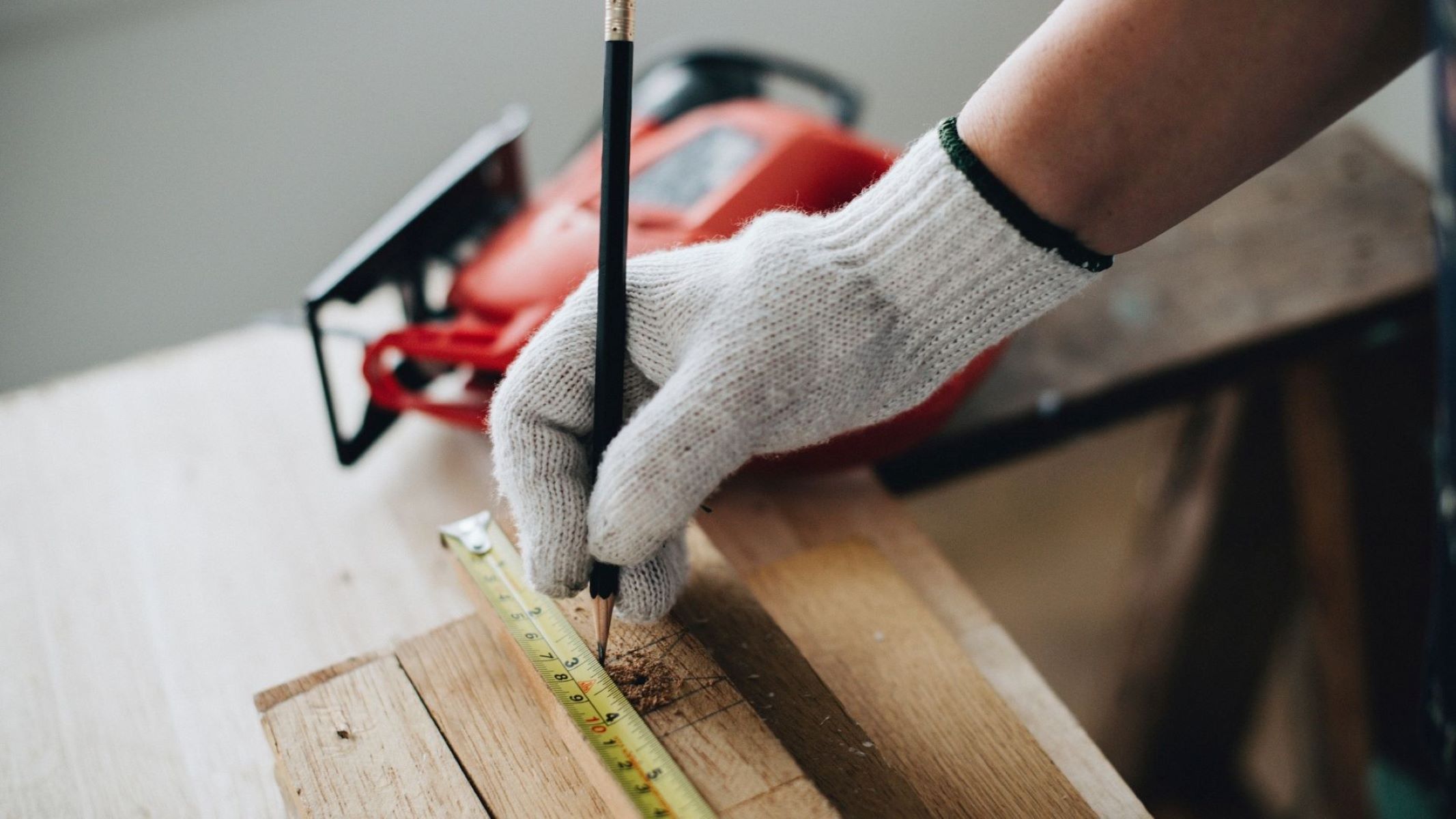Home>Guides>How-To Guides>What Home Projects Need A Permit


How-To Guides
What Home Projects Need A Permit
Published: December 21, 2023
Learn which home improvement projects require a permit with our helpful how-to guides. Avoid costly mistakes by understanding the permit process.
(Many of the links in this article redirect to a specific reviewed product. Your purchase of these products through affiliate links helps to generate commission for Storables.com, at no extra cost. Learn more)
Introduction
Welcome to the world of home improvement! Whether you're considering a minor renovation or a major construction project, it's crucial to understand the role of building permits. These seemingly mundane documents hold significant importance in the realm of home projects, as they ensure that your endeavors comply with safety standards, zoning regulations, and building codes.
In this comprehensive guide, we'll delve into the intricate details of building permits, shedding light on their necessity, the types of home projects that require them, and the process of obtaining one. By the end of this journey, you'll emerge equipped with the knowledge needed to navigate the permit landscape confidently, ensuring that your home projects are not only aesthetically pleasing but also legally sound. So, let's embark on this enlightening exploration of building permits and their pivotal role in the realm of home improvement.
Key Takeaways:
- Building permits are essential for home projects to ensure safety, compliance, and accountability, protecting property values and contributing to community well-being.
- Before starting any home improvement project, research local permit requirements, prepare detailed plans, and submit a thorough application to navigate the permit acquisition process efficiently.
Read more: What Home Improvements Need A Permit?
What is a Building Permit?
A building permit is an official document issued by a local government or regulatory authority that grants legal permission to commence construction, renovation, or alteration of a building or structure. It serves as a tangible affirmation that the proposed project complies with the relevant building codes, zoning regulations, and other ordinances.
Typically, building permits encompass a wide array of home improvement activities, including but not limited to:
- Constructing a new building or structure
- Altering or expanding an existing structure
- Installing or modifying electrical, plumbing, or HVAC systems
- Demolishing or relocating a building
- Adding decks, patios, or fences
- Excavating or grading the land
It’s important to note that the specific requirements for obtaining a building permit can vary significantly depending on the location and the nature of the project. Some jurisdictions may have stringent regulations, while others may be more lenient, but the fundamental purpose of a building permit remains consistent: to ensure that construction activities adhere to safety standards and local regulations.
Obtaining a building permit is a critical step in the planning phase of any home improvement project, and failure to do so can result in severe repercussions, including fines, work stoppages, and the potential removal of unauthorized structures. Therefore, it’s imperative to familiarize yourself with the permit requirements applicable to your area and project type before initiating any construction or renovation work.
Why are Building Permits Necessary?
Building permits are essential for several compelling reasons, each of which underscores their pivotal role in the construction and renovation process. Let’s explore the primary reasons why building permits are necessary:
Ensuring Structural Safety
One of the foremost purposes of building permits is to safeguard structural integrity and, by extension, the safety of occupants and neighboring properties. By requiring adherence to established building codes and standards, permits help prevent substandard construction practices that could compromise the stability and safety of buildings. This oversight is particularly crucial in high-risk areas prone to natural disasters, where structural resilience is paramount.
Compliance with Zoning Regulations
Building permits also serve as a mechanism for enforcing zoning regulations, which govern land use, property setbacks, building heights, and other spatial considerations. By obtaining a permit, property owners demonstrate their compliance with these regulations, ensuring that their construction or renovation activities align with the designated land-use parameters in their locality.
Protection of Property Values
Building permits play a role in preserving property values within a community. By upholding construction standards and aesthetic guidelines, permits help maintain the overall visual appeal and quality of neighborhoods, thereby safeguarding property values for homeowners and contributing to the cohesive development of the area.
Legal Accountability and Documentation
From a legal standpoint, building permits establish a clear record of authorized construction activities. This documentation is invaluable in the event of property transactions, insurance claims, or disputes, as it provides tangible evidence of compliance with regulatory requirements and construction standards.
Professional Oversight
By necessitating permit applications, local authorities can engage in professional oversight of construction projects. This oversight may involve plan reviews, inspections, and consultations to ensure that projects are executed in accordance with industry best practices and regulatory mandates, thereby fostering a culture of accountability and quality assurance.
These reasons collectively underscore the necessity of building permits in the construction and renovation landscape. By adhering to the permit application process and associated regulations, property owners and contractors contribute to the overall safety, integrity, and harmonious development of their communities.
Home Projects that Require a Permit
When contemplating home improvement endeavors, it’s crucial to discern which projects necessitate a building permit. While the specific requirements may vary based on regional regulations and the nature of the project, certain common home improvements typically mandate obtaining a permit. Here are some examples:
Structural Modifications
Any alterations to the structural components of a building, such as removing load-bearing walls, modifying roof structures, or changing the building’s footprint, almost invariably require a building permit. These modifications directly impact the structural integrity and safety of the property, necessitating oversight to ensure compliance with building codes and engineering standards.
Electrical and Plumbing Work
Installing or modifying electrical and plumbing systems within a home typically demands a permit. This includes activities such as rewiring, adding new electrical circuits, upgrading plumbing fixtures, or altering the layout of plumbing lines. Permit requirements for these projects are designed to uphold safety standards and ensure that the work is performed by qualified professionals.
Additions and Expansions
Constructing additions to a home, such as building new rooms, expanding living spaces, or adding supplementary structures like garages or sheds, commonly falls under the purview of permit requirements. These projects involve considerations related to zoning regulations, property setbacks, and structural compliance, warranting official authorization before commencement.
Demolition and Excavation
Activities involving demolition, excavation, or significant land grading often necessitate a permit. These projects carry inherent safety and environmental implications, making it imperative for local authorities to oversee the execution and ensure that they align with regulatory standards and land-use regulations.
Window and Door Replacements
While seemingly minor in nature, replacing windows and doors may require a permit, particularly if the alterations impact the structural integrity of the building or involve changes to egress requirements, energy efficiency standards, or historic preservation considerations.
It’s important to note that this list is not exhaustive, and the permit requirements for specific projects can vary based on local ordinances and building codes. Therefore, before embarking on any home improvement endeavor, it’s advisable to consult with the local building authority or permit office to ascertain the requisite permits for your proposed project.
Home Projects that Do Not Require a Permit
While numerous home improvement projects necessitate obtaining a building permit, there are several common undertakings that typically do not require official authorization. Understanding these exemptions can streamline the planning process and provide clarity on the scope of projects that can be executed without the burden of permit-related formalities. Here are some examples of home projects that often do not require a permit:
Cosmetic Enhancements
Projects focused solely on aesthetic improvements, such as painting interior or exterior surfaces, installing wallpaper, or refinishing floors, generally do not mandate a building permit. These enhancements are considered cosmetic in nature and do not directly impact the structural or functional aspects of the property.
Minor Repairs and Maintenance
Routine maintenance and minor repairs, including fixing leaky faucets, replacing damaged tiles, repairing minor drywall cracks, or addressing cosmetic issues, typically fall within the realm of exempted activities. These tasks are deemed necessary for the upkeep of the property and are distinct from substantial alterations that warrant regulatory oversight.
Landscaping and Hardscaping
Landscaping endeavors, such as planting trees, shrubs, flowers, or laying sod, as well as hardscaping projects like installing walkways, patios, or decorative garden structures, often do not require a building permit. However, it’s important to be mindful of local regulations pertaining to property lines, tree preservation, and stormwater management.
Interior Fixture Replacements
Replacing interior fixtures such as light fixtures, switches, outlets, or faucets typically does not necessitate a permit, as long as the modifications do not involve extensive electrical or plumbing work. However, it’s advisable to engage qualified professionals for these installations to ensure compliance with relevant codes and standards.
Minor Carpentry Work
Minor carpentry projects, such as installing cabinets, shelving, or trim work, generally do not require a permit. However, if these projects involve structural modifications or significant alterations to the building’s layout, permit requirements may apply.
It’s important to note that the exemption of these projects from permit requirements is subject to specific limitations and local regulations. Therefore, it’s prudent to consult with the local building authority or permit office to confirm the applicability of permit exemptions for your intended home improvement activities.
How to Obtain a Building Permit
Securing a building permit is a pivotal step in the journey of executing home improvement projects within the bounds of regulatory compliance. The process of obtaining a permit typically involves several sequential steps, each of which is essential to navigate with precision and diligence. Here’s a comprehensive guide on how to obtain a building permit:
Research Local Requirements
Before initiating the permit application process, it’s imperative to research the specific permit requirements and procedures established by the local building authority or permit office. This entails familiarizing yourself with the applicable building codes, zoning regulations, permit fees, and documentation prerequisites pertinent to your project and geographical area.
Prepare Detailed Plans and Documentation
Comprehensive and accurate plans and documentation are fundamental components of the permit application. Depending on the nature of the project, this may encompass architectural drawings, structural engineering plans, site surveys, specifications for materials and equipment, and any other pertinent details that elucidate the scope and technical aspects of the proposed construction or renovation.
Complete the Permit Application
Upon assembling the requisite plans and documentation, the next step involves completing the permit application form. This form typically solicits information regarding the property owner, project description, construction timeline, contractor details (if applicable), and other pertinent data. Accuracy and thoroughness in completing the application are paramount to expedite the review process.
Submit the Application and Fees
Once the application is meticulously filled out and accompanied by the requisite documentation, it should be submitted to the local building authority or permit office. Alongside the application, permit fees, which vary based on the scope and valuation of the project, are typically payable at the time of submission.
Read more: What Size Shed Needs A Permit
Undergo Plan Review and Inspections
After the submission of the permit application, the plans undergo a comprehensive review by the building department to assess compliance with building codes, zoning regulations, and other applicable standards. This review may entail consultations with various departments, such as planning, engineering, and fire safety. Upon approval of the plans, inspections are scheduled at key stages of the construction process to verify adherence to the approved plans and applicable regulations.
Receive the Issued Permit
Upon successful completion of the review process and fulfillment of any outstanding requirements, the building permit is issued, signifying official authorization to commence the construction or renovation activities outlined in the approved plans. It’s imperative to prominently display the permit at the project site and make it readily accessible for inspections throughout the duration of the work.
By meticulously adhering to these steps and engaging in proactive communication with the local building authority, property owners and contractors can navigate the permit acquisition process efficiently and ensure that their home improvement projects proceed in compliance with regulatory mandates.
Conclusion
Embarking on home improvement projects is an exciting journey, marked by the pursuit of enhancing living spaces and realizing creative visions. However, amidst the fervor of construction and renovation, it’s imperative to recognize the indispensable role of building permits in upholding safety, compliance, and accountability.
Throughout this guide, we’ve delved into the intricacies of building permits, elucidating their significance, the projects that necessitate them, and the process of obtaining these vital authorizations. By understanding the nuances of permit requirements and diligently navigating the permit acquisition process, property owners and contractors can ensure that their endeavors align with regulatory standards, fostering safe and harmonious development within their communities.
As you set out to embark on your home improvement odyssey, remember that building permits are not mere bureaucratic formalities; they are guardians of structural integrity, custodians of property values, and sentinels of community well-being. By embracing the permit acquisition process with diligence and foresight, you contribute to the collective tapestry of responsible construction practices and the enduring legacy of safe, resilient, and aesthetically pleasing homes.
May your future home projects be adorned not only with the beauty of design and craftsmanship but also with the assurance of regulatory compliance, ensuring that your abode stands as a testament to the seamless fusion of creativity and conscientiousness.
Now, armed with the knowledge and understanding of building permits, go forth and embark on your home improvement endeavors with confidence, knowing that each brick laid and each beam raised is a testament to your commitment to safety, quality, and the enduring allure of the spaces we call home.
Frequently Asked Questions about What Home Projects Need A Permit
Was this page helpful?
At Storables.com, we guarantee accurate and reliable information. Our content, validated by Expert Board Contributors, is crafted following stringent Editorial Policies. We're committed to providing you with well-researched, expert-backed insights for all your informational needs.










0 thoughts on “What Home Projects Need A Permit”